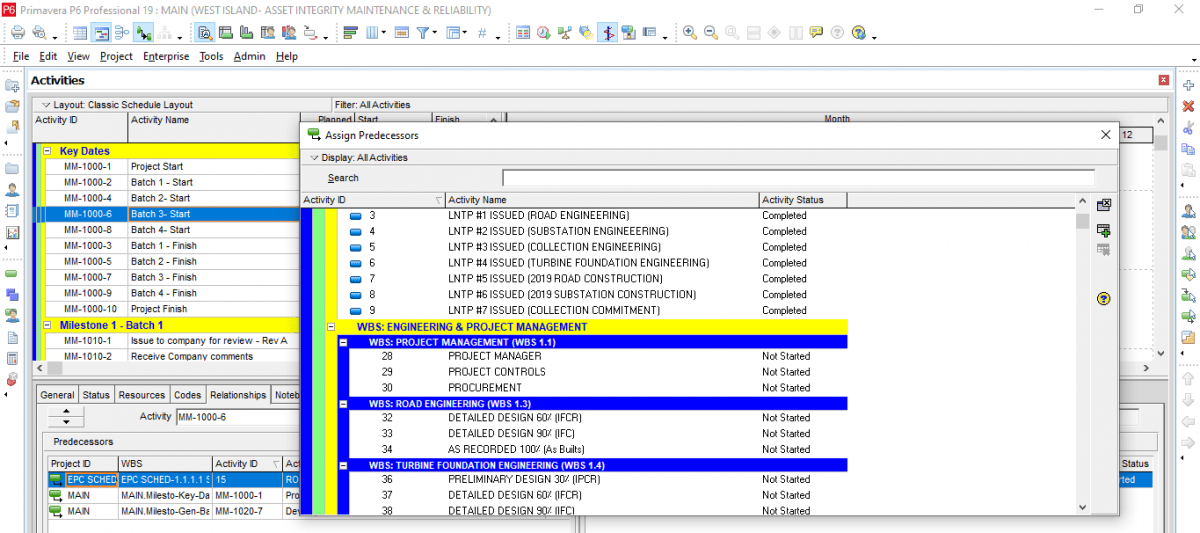

Examples of LOE activities include administrative and project management efforts. LOE activities are helpful in modeling or scheduling activities that do not specifically produce a deliverable, i.e.

Primavera P6 Professional has LOE activities that can span the entire duration of the project. Typically, only after defining numerous tasks do you ask yourself which of these tasks have a common thread or purpose? These tasks then are grouped together underneath a summary task, which is the equivalent of the WBS element and deliverable in Primavera P6 Professional. Microsoft Project is geared more towards a bottom-up approach thanks to it’s use of indenting activities to build a WBS hierarchy, where you first consider your tasks. Only after you have clearly defined the end product or deliverables do you begin to consider the activities required to produce those deliverables. In support of this effort precedence ordering Primavera P6 has you first input the Work Breakdown Structure (WBS), which is a hierarchical breakdown of all the project deliverables. What does that mean? Specifically, what is a top-down scheduling tool? It means that in Primavera P6 you consider first the end product or deliverable that is the whole purpose of the project. Primavera P6 Professional is more suited to top-down scheduling than Microsoft Project. And possibly be a starting point in the discussion of both software scheduling tools, although I don’t think this debate will ever end.

It is more of a reminder of the reasons I have come to appreciate and respect using Primavera P6. It is not meant to be a definitive or exhaustive pro/con analysis treaty of the two software programs.

This article lists and describes the advantages of the Primavera P6 Professional scheduling software tool over Microsoft Project. However I’m a Primavera P6 expert more than I am a Microsoft Project expert, so you can take the following for what it’s worth from that perspective. Of course, to be fair they are both very capable tools, and undoubtedly a Microsoft Project expert could construct a similar list of advantages for Microsoft Project over Primavera P6. Realizing that my response could be more instructive, I decided to log Primavera P6 advantages over Microsoft Project as I came upon them in practice. I will normally mention, off the top my head, a Primavera P6 advantage or two to support my statement. My response is biased, of course, and I say Primavera P6 Professional. Students often ask whether Primavera P6 or Microsoft Project is more advantageous. Which scheduling tool is a better fit for your situation: Primavera P6 or Microsoft Project?


 0 kommentar(er)
0 kommentar(er)
